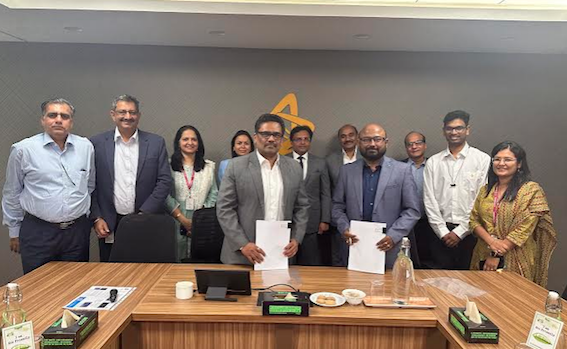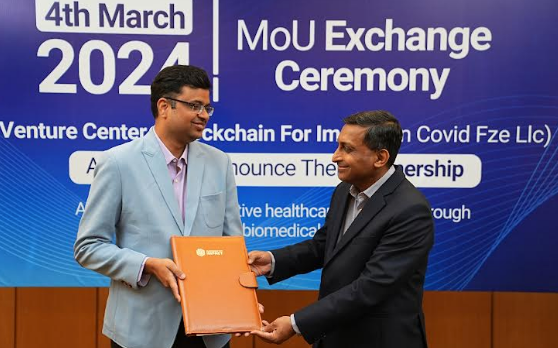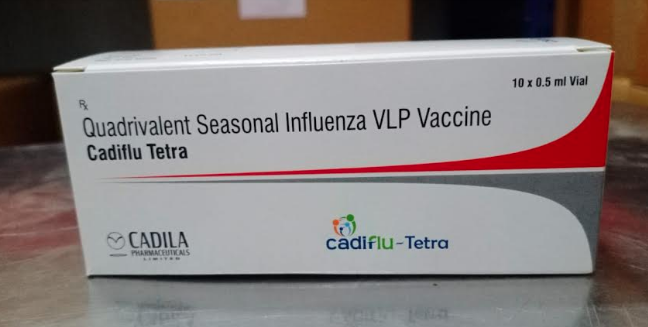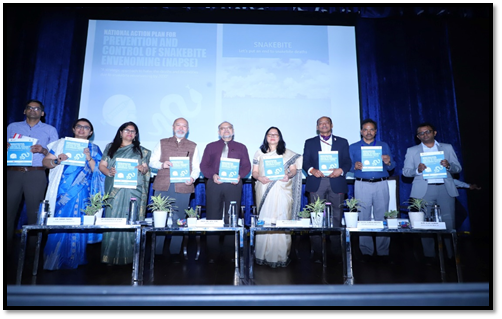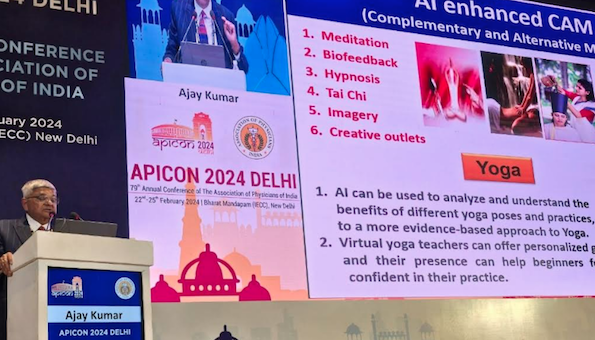How is the ‘Make in India’ MedTech transformation coming along?
09 April 2023 | Views | By Debarati Sengupta, Senior Industry Analyst/Team Lead (Medical Device and Imaging), TechVision, Frost & Sullivan
The government has taken several cautious steps to fuel this promising sector. Strategic decisions such as foreign direct investments (FDI) promoting medical device parks are aimed to drive business. Let us look at how the industry has come along with this ‘Make in India’ initiative.

In September 2014, the Government of India launched a major national programme called the Make in India initiative to boost the manufacturing sector by providing investments and incentives for best-in-class facilities and infrastructure. Medtech was recognised as the sunrise sector under the Make in India campaign. According to the India Brand Equity Foundation, the Indian Medtech sector is growing at a CAGR of 37 per cent and by 2050, it is expected to reach $50 billion.
100% FDI in medical devices through automatic route
The Department of Industrial Policy and Promotion (DIPP) in 2014 allowed unconditional 100 per cent foreign direct investment (FDI) in medical devices to reduce imports and promote domestic manufacturing. The Reserve Bank of India clarified that the Medtech industry would have 100 per cent FDI through the automatic route, which differs from the pharmaceutical sector. This boosted the FDI for medical devices from $62.5 million in 2014 to $161 million in 2015 and $439 million in 2016.
The government put a price cap on a few medical devices to make healthcare accessible and affordable to all. Though the price cuts benefited the patients, the Medtech industry was not encouraged. The FDI investment plunged to $184 million in 2017 and further dipped to $66 million in 2018. The price control made local manufacturers increase their imports and trades and build warehouse infrastructure rather than develop a manufacturing facility. Since Medtech is such a technology- and capital-dependent industry, a collaborative model such as public-private partnerships is essential for driving local manufacturing.
In 2019-2020, the pandemic was vital in highlighting the high skill set and low manufacturing cost in India compared to the US, the UK, Europe, and Japan. This helped drive some of the medical devices FDI in the past two years. For example, in 2022, India and Japan discussed inviting Japanese companies to manufacture medical equipment in India. International companies can benefit from these policies and explore business expansion in this high-growth market.
In May 2020, the government launched the PLI (Production Linked Incentive schemes), in which some categories of medical devices will be given financial incentives to build infrastructure for large-scale domestic medical equipment manufacturing. Categories include cancer care/radiotherapy medical devices, radiology and imaging medical devices (ionising and non-ionising radiation products), nuclear imaging devices, anaesthetics and cardio-respiratory medical devices, including catheters of the cardiorespiratory category and renal care medical devices, and all implants, including implantable electronic devices. The government declared to offer Rs 3,420 crore between 2020-21 and 2027-28.
This has been a big boost for the large Medtech providers, and many have used this scheme to launch new manufacturing facilities. For example, in March 2022, Wipro GE Healthcare announced a new 35,000 sq ft medical device manufacturing factory in Bengaluru. This facility will manufacture CT, ultrasound imaging devices, cath lab equipment, patient monitoring solutions, ECG machines and ventilators. In April 2022, Siemens Healthineers started its new computed tomography scanners manufacturing facility in Bengaluru. These products are under the approved category of the medical devices segment of the PLI. Many more projects have been approved by the government under the PLI scheme, including Philips Global Business Services for MRI coils; Meril Healthcare, Envision Scientific and Bio India Interventional Technologies for manufacturing implantable electronics; and Allied Medical, Deck Mount Electronics and Microtek New Technologies for setting up manufacturing facilities for anaesthetics and cardio-respiratory medical devices. This scheme is boosting the Make in India initiative for the Medtech sector, promoting Atmanirbhar Bharat, or the self-reliant India campaign by the Indian government.
The current PLI scheme’s eligibility PLI is that the company should have Rs 60 crore (FY 2022-23) threshold minimum for incremental sales of manufactured goods, and the threshold minimum increases by almost Rs 60 crore every year. Despite its benefits, this PLI scheme misses out on incentivising the technology-driven startups or mid-sized Medtech companies in India that need funds for research and development.
During the recent pandemic, we witnessed increased demand for technologically advanced, high-quality, low-cost medical devices. Several Medtech startups with cutting-edge technologies emerged. Considering the large Medtech Indian market with diverse application opportunities, all large, small, and midsized companies need to be supported for a successful manufacturing ecosystem. Additional incentives for small- and medium-scale domestic companies will enable smaller institutions to thrive. R&D funding will also be imperative to support indigenous innovations.
A recent Government of India central sector scheme towards the “Make in India” initiative is the promotion of medical devices parks. The Centre sanctioned four medical device parks (in Madhya Pradesh, Tamil Nadu, Himachal Pradesh, and Uttar Pradesh) of about 1,326 acres and will also provide a maximum grant-in-aid of Rs 400 crore (Rs 100 per park) or 70 per cent of the common infrastructure cost, whichever is less. The rest of the costs will be covered by the state governments. This funding will help develop Medtech manufacturing state-of-art infrastructure and reduce the production cost of medical devices, improving affordability and availability. The tenure of this scheme is from FY 2020-2021 to FY 2024-2025. This advanced infrastructure facility will benefit the small- and medium-scale industries by providing access to world-class common infrastructure and standardised testing facilities. These can significantly help the promotion of the Ministry of Micro, Small and Medium Enterprises (MSME). The World Association for Small and Medium Enterprises (WASME) entered a strategic collaboration with Andhra Pradesh MedTech Zone (AMTZ), where small manufacturers can use the AMTZ’s in-house, state-of-art scientific facilities, helping manufacturers reduce the cost of manufacturing.
Over the years, many more medical device parks have emerged across the country, promoting R&D and manufacturing. For example, Sahajanand Medical Technologies (SMT) set up Asia's largest stent manufacturing and R&D facility at Hyderabad Medical Devices Park. The facility aims to manufacture more than one million stents and two million balloon catheters. AMTZ in Andhra Pradesh supplied 1 million RT-PCR kits per day at the peak of the pandemic. Transasia Diagnostic Pvt Ltd. (TDPL) launched the first-in-India Transasia-Erba Monkeypox RT-PCR kit in August 2022, and the company has the capacity to manufacture more than 200 million Monkeypox RT-PCR kits per month.
In 2022, the Draft National Policy for Medical Devices 2022 was submitted. This policy tries to encompass all of the existing Medtech industry challenges, improve manufacturing for medical devices, and reduce import dependency from 75- 80 per cent to 30 per cent in the next 10 years. This latest draft policy streamlines the regulations and compliance requirements, simplifies the patent process, encourages innovation and R&D through public-private partnerships, and funds healthcare innovation hubs and medical parks.
Working toward digital health, the Indian government is supporting startups in telemedicine and AI-enabled healthcare. The National Digital Health Mission (NDHM) was launched on August 15, 2020, to boost the digital infrastructure for digital healthcare services. This digital healthcare database will enable accessible and affordable healthcare for all. However, the recent Draft National Policy for Medical Devices doesn’t discuss the regulations on data privacy and cybersecurity in medical devices, and clear health data guidelines will be essential for digital-enabled Medtech industry growth.
Future opportunities
Today, India is a huge Medtech market; it’s the fourth largest in Asia. With a skilled, talented workforce, government incentives and resource availability, manufacturing costs can be optimised in India, but the country is still importing a majority of its medical device requirements. It is evident that the government is pushing to address this dichotomy with several schemes supporting the Make in India initiative for this high-capital, technology-dependent Medtech industry. The companies should benefit from the schemes and this favourable environment to grow their manufacturing setup in India.
The Medtech sector in India has come a long way. Several large companies are setting up manufacturing hubs, and local manufacturers are growing their facilities. Some additional benefits to the small-to-medium domestic consumable segment players can help curb further imports. The latest Draft National Policy also aims to reduce the dependency on imports, improve the country’s health security, and make India a global manufacturing hub.
Debarati Sengupta, Senior Industry Analyst/Team Lead (Medical Device and Imaging), TechVision, Frost & Sullivan








